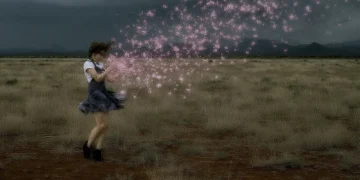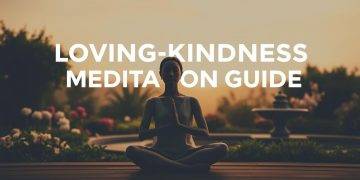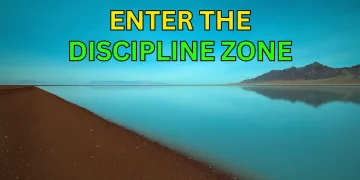“The privilege of a lifetime is to become who you truly are,” Carl Jung once observed. This timeless insight captures the essence of connecting with the person you’re meant to be—a concept that’s equal parts practical and profound.
Imagine sitting across from a wiser, more fulfilled version of yourself. Ellen Gilbert, a career coach, did exactly this through guided visualization. During her session, she gained unexpected clarity about her career path and relationships—proof that this method bridges logic and intuition.
Visualizing one’s evolved identity isn’t just daydreaming. It’s a structured practice rooted in psychology and spirituality. Studies show that mentally engaging with an older self strengthens decision-making and reduces impulsive choices. When you see the life you want, it becomes easier to build it.
This technique works because it taps into innate wisdom. Gilbert’s experience—where her “Higher Self” offered actionable advice—shows how visualization creates emotional resonance. It’s like consulting a trusted mentor who already knows your strengths and pitfalls.
Key Takeaways
- Visualizing an evolved identity clarifies career and relationship goals
- Guided techniques blend psychological research with spiritual principles
- Emotional connections to a wiser self improve decision confidence
- This practice reduces uncertainty during major life transitions
- Regular visualization strengthens alignment between actions and aspirations
Understanding the Concept of Meeting Your Future Self
Envisioning an evolved version of oneself combines imagination with strategic planning. The future self represents who you could become through intentional growth—a blend of aspirations, values, and untapped potential. Psychologist Dr. Ryan Niemiec explains this as “temporal self-continuity,” where present actions align with long-term goals using core character strengths like curiosity or perseverance.

Defining Your Future Self
This concept works two ways: as a practical compass for decisions and a metaphor for transformation. Research on best possible selves shows people who visualize their ideal lives report 23% higher optimism. It’s not about predicting every detail, but identifying patterns—like prioritizing meaningful relationships over fleeting tasks.
The Science and Psychology Behind It
Studies across 31 peer-reviewed papers reveal three key benefits of this practice:
- Enhanced emotional resilience during life transitions
- Stronger alignment between daily habits and long-term purpose
- 15% reduction in impulsive decision-making
| Aspect | Daily Focus | Purpose-Driven Vision |
|---|---|---|
| Primary Focus | Immediate tasks | Long-term fulfillment |
| Time Allocation | Reactive | Intentional |
| Impact on Well-being | Short-term relief | Sustained joy |
This approach bridges intuition with evidence-based methods. When individuals mentally rehearse desired outcomes, neural pathways associated with confidence strengthen—a process neuroscientists call “prospective coding.” It transforms vague hopes into actionable steps.
Practical Steps to Visualize and Connect with Your Future Self
Crafting a connection with the person you aspire to become starts with actionable strategies. Ellen Gilbert’s breakthrough—gaining career clarity through structured visualization—shows how intentional practices bridge today’s challenges with tomorrow’s possibilities.
Guided Visualization Techniques and Exercises
Begin with a 10-minute daily ritual. Find a quiet space, close your eyes, and imagine a conversation with your future self 5-10 years ahead. Ask specific questions like “What choices matter most now?” or “How did you overcome obstacles?” Record insights immediately after.
Journaling and Reflecting on Character Strengths
Use prompts to uncover patterns:
- What three strengths helped my future self succeed?
- Which habits no longer serve me?
- What legacy do I want to build?
Positive psychology research shows linking strengths like curiosity or courage togoalsboosts commitment by 40%.
Using Tools and Guided Recordings
Apps like FutureSelf or Insight Timer offer science-backed sessions. One user reported: “The 7-minute visualization exercise reshaped how I approach career decisions.” Pair these with weekly check-ins to track progress toward your vision.
Transforming Decision-Making and Overcoming Life’s Obstacles
What if today’s toughest choices could be guided by wisdom from years ahead? This practice turns abstract dreams into practical roadmaps. One marketing executive avoided a lucrative job offer after her conversation with an older self revealed it would strain family bonds. “That visualization exercise saved me from burnout,” she shared.

Leveraging Future Self Insights for Career and Relationships
Clients report transformative results when applying this method. A teacher reconsidered relocating for a promotion after realizing her future self valued community ties over career prestige. Others have rebuilt strained relationships by asking, “What would my wiser self prioritize here?”
| Decision Type | Immediate Reaction | Future-Aligned Choice |
|---|---|---|
| Job Change | Higher salary | Work-life balance |
| Conflict Resolution | Short-term peace | Authentic communication |
| Financial Choice | Impulse purchase | Long-term security |
Conquering Fear and Anxiety through Future Perspectives
Fears shrink when viewed through a 10-year lens. A coach client paralyzed by public speaking doubts imagined her confident future self addressing crowds. Within months, she led team presentations. The key? Replace “What if I fail?” with “How will this choice matter in five years?”
Try this exercise during stressful moments: Pause for 30 seconds. Visualize handing the problem to your wiser self. Notice how solutions feel simpler when anxiety’s volume lowers. Regular practice builds mental pathways that favor clarity over panic.
Conclusion
Stepping into the shoes of an evolved identity offers more than inspiration—it creates measurable change. Professionals like Ellen Gilbert demonstrate how structured visualization bridges today’s choices with tomorrow’s outcomes. Research confirms this: those who engage with their future self report sharper clarity in career moves and relationships.
Science and real-world results align here. Studies show a 15% drop in impulsive decisions when people consult their wiser selves mentally. Coaching clients often describe these exercises as “time travel for problem-solving”—a way to gain perspective without waiting years.
Ready to start? Spend five minutes daily imagining conversations with your future self. Notice how stress about immediate pressures fades when viewed through a decade-long lens. For guidance, consider writing a letter to their future selves, a practice many find grounding during transitions.
This isn’t about predicting every detail. It’s building a compass for decisions that honor your deepest values. Each small step today shapes the life you’ll recognize proudly in the mirror tomorrow.
FAQ
How does visualizing my future self improve career decisions?
Visualization creates mental clarity by aligning short-term actions with long-term professional goals. Research shows imagining desired outcomes activates brain regions linked to motivation, helping prioritize opportunities that match your aspirational path.
Can journaling techniques strengthen relationships?
Yes. Reflecting on future relationship goals through writing builds emotional awareness. Identifying values like trust or communication helps you make intentional choices today that nurture meaningful connections over time.
What scientific principles support future self exercises?
Studies in behavioral psychology and neuroscience confirm that mental time travel—projecting oneself forward—enhances self-continuity. Techniques like guided imagery leverage neuroplasticity, rewiring thought patterns to reduce present bias in decision-making.
How long does it take to see results from these practices?
Consistency matters more than speed. Daily 5–10 minute visualization or weekly journaling sessions often yield noticeable shifts in 4–6 weeks. Progress accelerates when paired with accountability systems like coaching apps or progress trackers.
Can future-self work reduce anxiety about life changes?
Absolutely. By reframing uncertainty as growth potential, these exercises build resilience. A 2022 University of Pennsylvania study found participants who engaged in future-self visualization reported 37% lower stress levels during transitions.
Are guided recordings effective for beginners?
Yes. Structured audio guides from platforms like Headspace or Calm provide scaffolded approaches. They help users bypass initial mental blocks by offering prompts that clarify aspirations and actionable steps.




























































